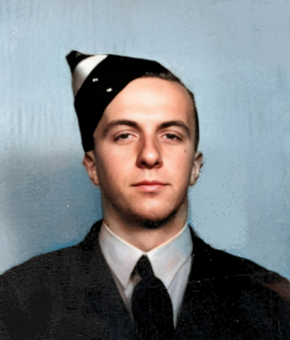
DRAKES, Stewart Ian
| Service Number: | 427073 |
|---|---|
| Enlisted: | 20 May 1942 |
| Last Rank: | Flight Sergeant |
| Last Unit: | No. 8 Squadron (RAAF) |
| Born: | Lincolnshire, England, 2 April 1924 |
| Home Town: | Busselton, Western Australia |
| Schooling: | Busselton State School, Busselton. Western Australia |
| Occupation: | Clerk, Postmaster General's Dept, G.P.O. Perth. |
| Died: | Flying Battle, New Guinea, 15 November 1943, aged 19 years |
| Cemetery: |
Rabaul (Bita Paka) War Cemetery, Papua New Guinea Plot W, Row B, Grave 8. |
| Memorials: | Australian War Memorial Roll of Honour, Busselton Cenotaph Victoria Square, Busselton Rotary Park Of Remembrance War Memorial, Kings Park Western Australia State War Memorial, Postmaster General's Department Perth WWII HR |
World War 2 Service
| 3 Sep 1939: | Involvement Flight Sergeant, 427073 | |
|---|---|---|
| 20 May 1942: | Enlisted Royal Australian Air Force, Flight Sergeant, 427073 | |
| 8 Oct 1943: | Transferred Royal Australian Air Force, Flight Sergeant, No. 8 Squadron (RAAF) |
Help us honour Stewart Ian Drakes's service by contributing information, stories, and images so that they can be preserved for future generations.
Add my storyBiography contributed by Joy Dalgleish
"LOVED SON OF BEN & JAN, BROTHER OF DOREEN & MICHAEL - SO PROUD OF YOU UNCLE".
Stewart, or Ian to his friends, was born in Lincolnshire, England on 2 April 1924. He moved to Australia with his parents and brother and sister as a child and completed his education at the Busselton State School in Western Australia.
Stewart worked as a clerk in Perth's Post Master General's Department before enlisting into the Air Force at the age of 18, on 20 May 1942. He began his aircrew training on 19 August 1942 and was awarded the Air Observers badge on 7 January 1943. Stewart had nine postings, the last was on 27 September 1943 to No. 8 Squadron, based at Vivagani, Goodenough Island, Papua New Guinea.
His aircraft went missing whilst on operations during the night of 14/15 November 1943. It crashed into sea near Kawa Island, New Guinea after making a torpedo attack on Japanese shipping near Rabaul Harbour, New Guinea
Their aircraft was last sighted by other RAAF aircrew on its way back to base at the southern end of St George’s Channel, whilst returning to their base at Vivigani following the raid. A search was carried out, but only a fuel tank was recovered. At the time the exact location of the aircraft was unknown and none of the crew of four was recovered. On 18 March 2001, fifty-seven years later, the wreck of their Bristol Beaufort aircraft was found by skin-divers on the sandy ocean floor at GPS: 8 degrees 32 minutes South, 150 degrees 18 minutes East, 80 kilometres west of the Trobriand Group of islands, Papua New Guinea. The remains of the crew of four were found in the wreckage, together with their identity tags. The wreckage has been left on the ocean floor as a memorial to the men. The aircraft was discovered 18 metres below the surface, on the sea floor, half buried in the sand and silt, and upside down. It took eight months to plan and execute the recovery of their remains. Their remains were buried on 2/5/2002, with full military honours, at Bita Paka War Cemetery.

















